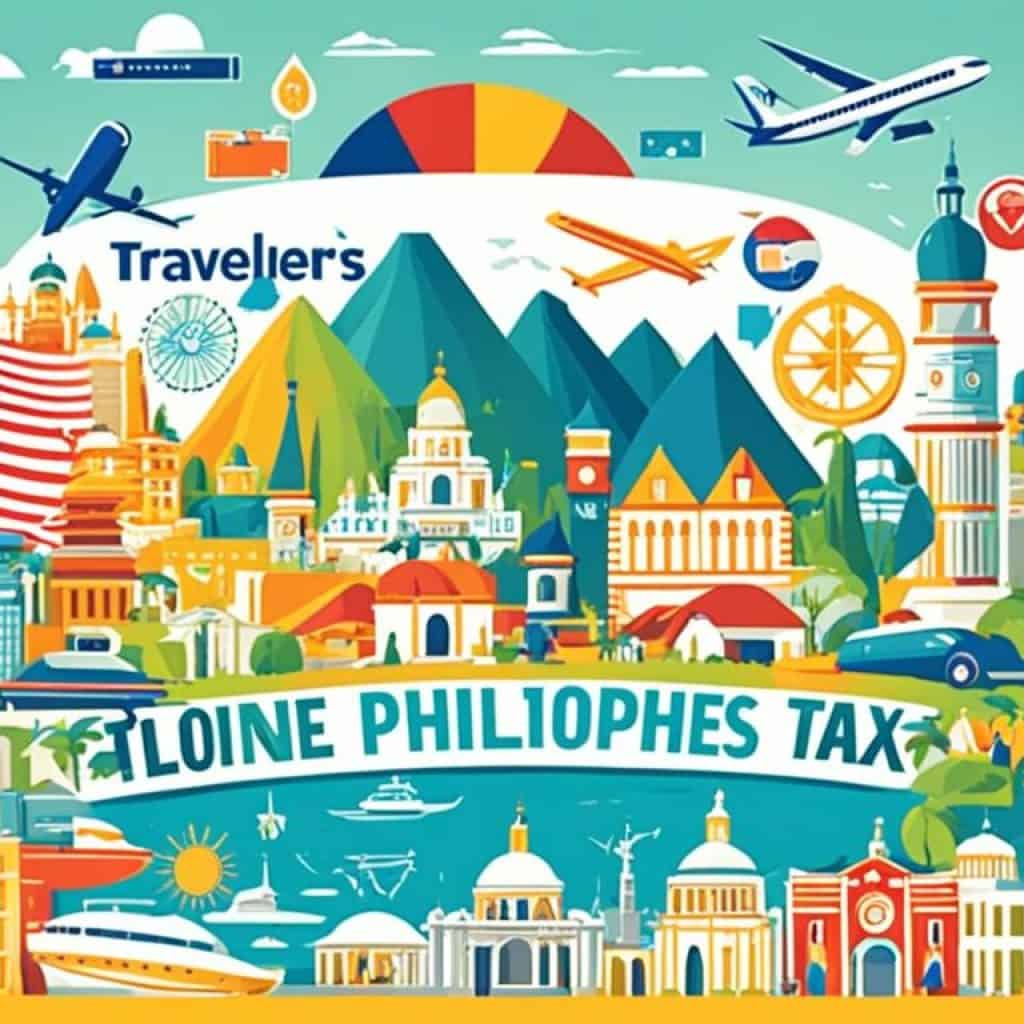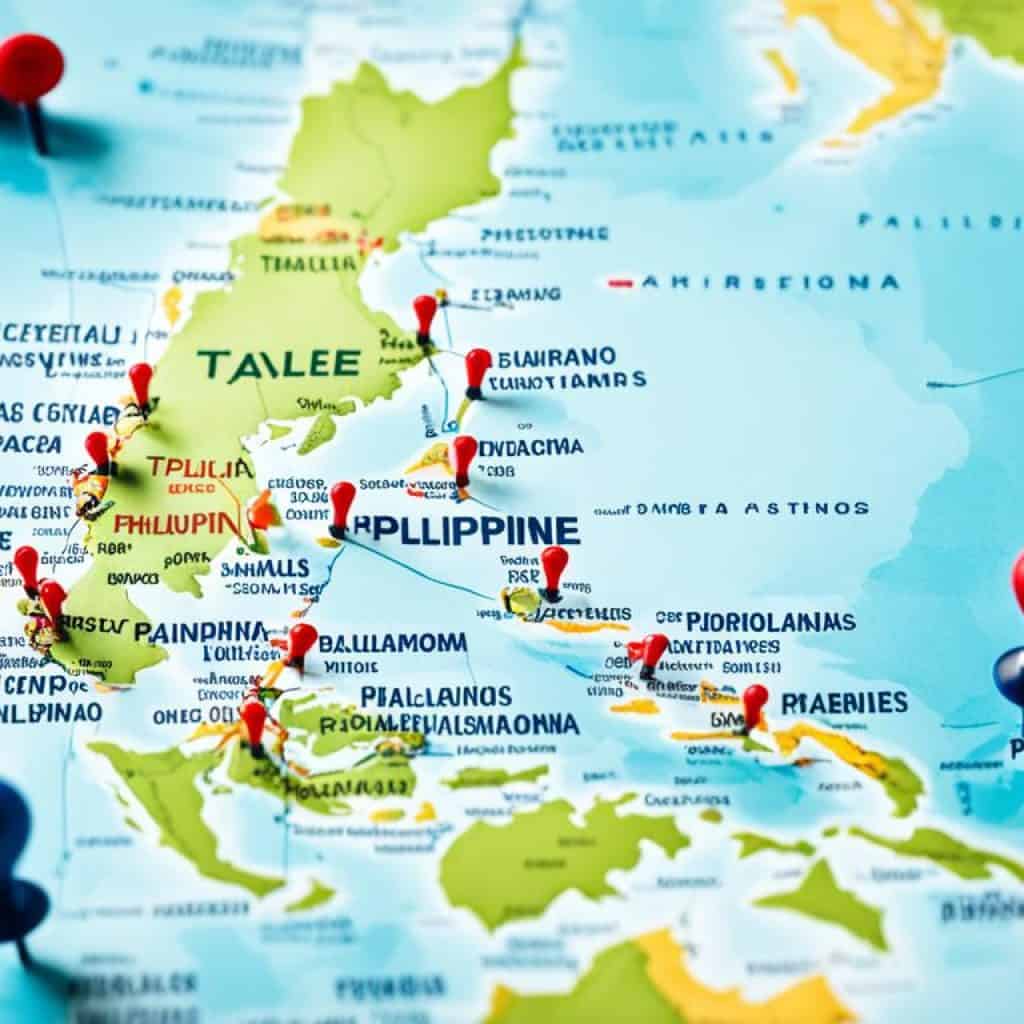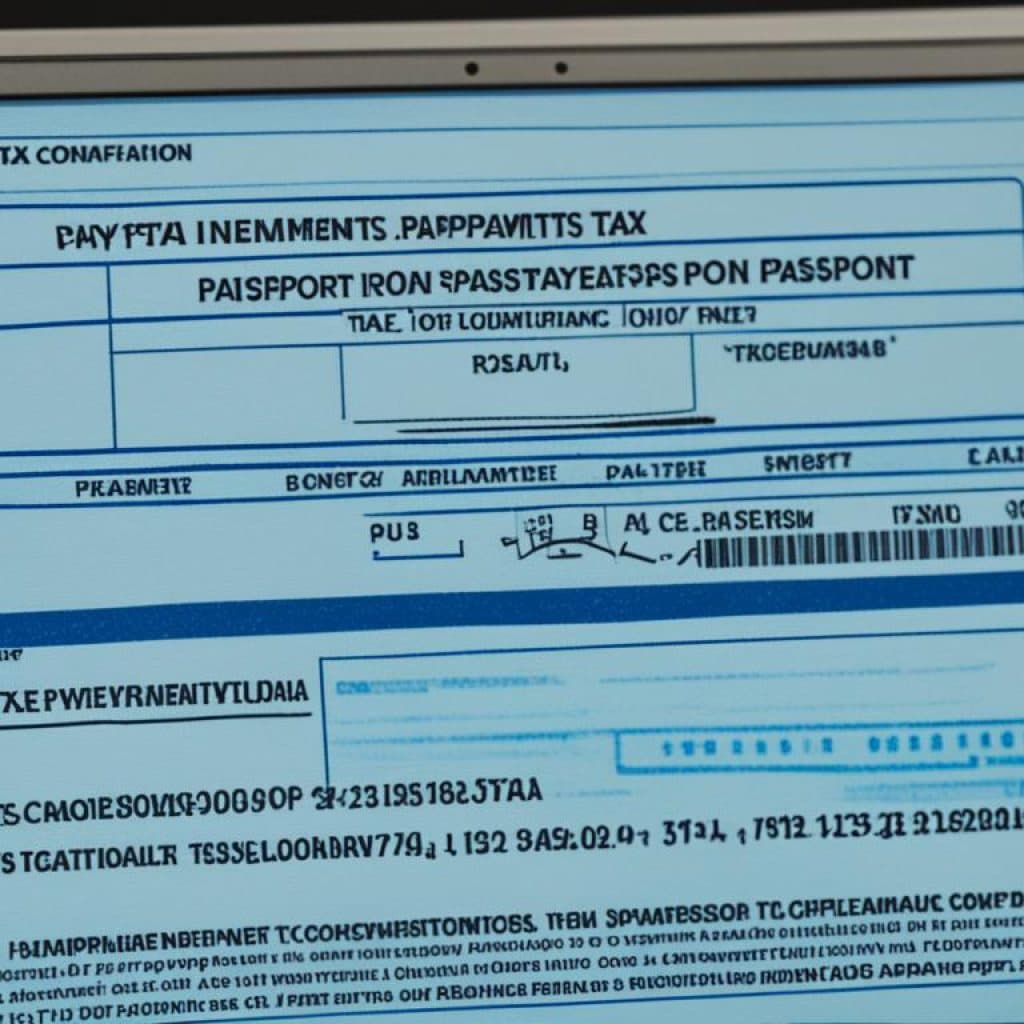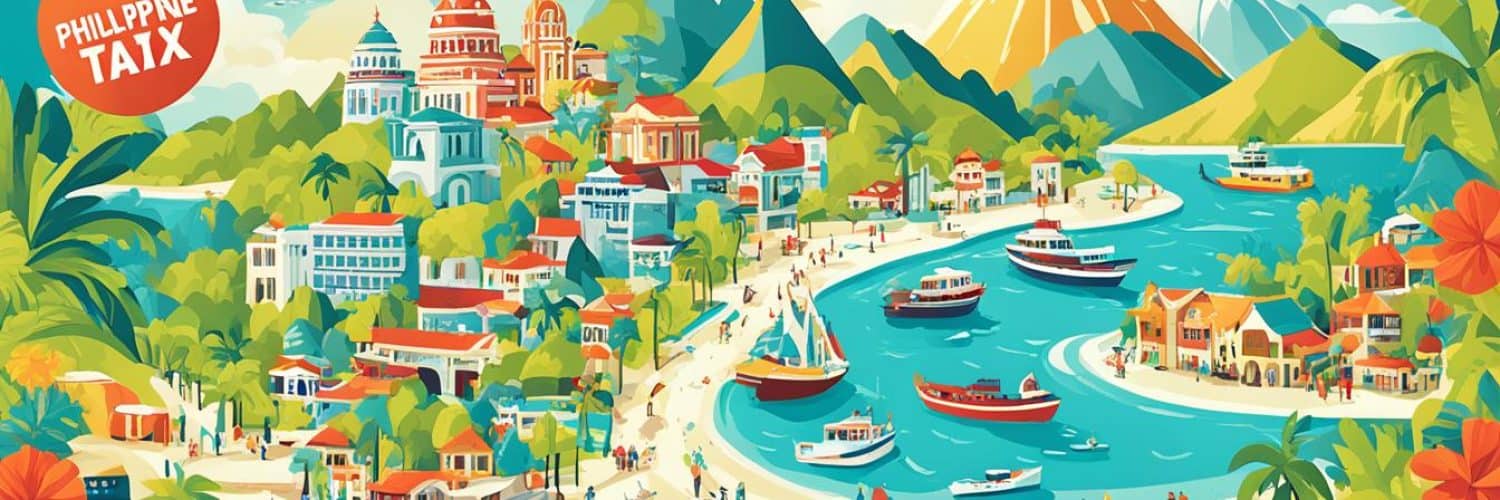Are you planning a trip from the Philippines and wondering how much you’ll have to pay in travel tax? The Philippine travel tax is an additional fee imposed on travelers flying out of the country. It is collected to provide funds for government programs in the travel and tourism sector, supporting the growth and development of the industry.
But here’s the question: How much is the travel tax in the Philippines? Is it an affordable fee or a significant expense that can affect your travel budget? In this article, we will delve into the various aspects of the Philippine travel tax, including the rates, exemptions, payment methods, and even money-saving tips. Get ready to uncover everything you need to know about the travel tax in the Philippines!
Key Takeaways:
- Learn about the different rates for the Philippine travel tax based on your ticket class
- Discover who is required to pay the travel tax and who qualifies for exemptions
- Find out where and how to pay the Philippine travel tax, both offline and online
- Understand the process of getting a travel tax refund under specific circumstances
- Explore money-saving tips to reduce your travel tax expenses
What is travel tax?
Travel tax is an additional fee imposed on travelers flying out of the Philippines. It is collected to generate funds for government programs, particularly in the travel and tourism sector.
The purpose of the travel tax is to support various initiatives that contribute to the growth and development of the country’s tourism industry. The funds collected from the travel tax are utilized in several key areas:
- Infrastructure development: The travel tax helps finance the construction and maintenance of essential travel and tourism infrastructure, such as airports, roads, and transportation systems. This investment allows for improved travel experiences and enhanced accessibility to tourist destinations across the Philippines.
- Tourism-related educational programs: A portion of the travel tax is allocated to funding educational initiatives focused on the travel and tourism sector. This support enables the development of high-quality educational programs, scholarships, and vocational training opportunities for individuals pursuing careers in the industry.
- Cultural and arts endeavors: The travel tax also helps foster the preservation and promotion of the Philippines’ rich cultural heritage. A portion of the funds is dedicated to supporting cultural events, art exhibitions, historical preservation projects, and other initiatives that showcase the country’s diverse traditions and artistic expressions.
By imposing the travel tax, the government aims to ensure the sustainability and growth of the tourism industry, which plays a vital role in the country’s economic development. Travelers who pay the travel tax contribute directly to these important programs and initiatives, ultimately benefiting both the tourism sector and the overall Philippine economy.
In the next section, we will dive into who is required to pay the travel tax and the exemptions available. But before that, let’s delve deeper into the significance of this financial obligation.
Who is required to pay travel tax?
All Filipino citizens and taxable foreign passport holders are required to pay the travel tax when traveling internationally. Non-immigrant foreign passport holders who have stayed in the Philippines for more than a year are also required to pay the travel tax. However, certain individuals, such as Overseas Filipino Workers (OFWs), balikbayan visitors staying for less than a year, and Filipinos who are permanent residents abroad, are exempted from paying the travel tax. It is important for travelers to know if they fall under the category of individuals required to pay the travel tax.
Who is exempted from paying travel tax?
Travelers to the Philippines can benefit from several exemptions when it comes to paying the travel tax. These exemptions are designed to accommodate various individuals, including Overseas Filipino Workers (OFWs), balikbayan visitors, and Filipinos who hold permanent residency abroad. Additionally, students on scholarships, international carrier crew members, US military personnel, UN employees, Philippine government officials on official business, Philippine foreign service personnel, foreign diplomatic representatives in the Philippines, and personnel of multinational companies can qualify for travel tax exemptions.
To avail of these exemptions, it is crucial for eligible individuals to provide the necessary documents that establish their eligibility to the appropriate authorities when traveling.
The range of exemptions offered ensures that different individuals can enjoy their travel experience without the burden of additional travel tax charges. Whether it’s OFWs returning to their families or students studying abroad, these exemptions contribute to making travel more affordable and accessible for those who meet the criteria.

Exemptions from Philippine Travel Tax
“Travel tax exemptions in the Philippines provide important benefits for a wide range of individuals, including OFWs, students on scholarships, and members of international carrier crews. These exemptions help create an inclusive and thriving travel industry that supports the country’s economic growth and global connections.” – PhilTravel Insights
By acknowledging and honoring these exemptions, the Philippine government recognizes the contributions of various groups and aims to foster positive relations with both Filipino citizens abroad and the international community. These exemptions are part of a comprehensive strategy to attract travelers and sustain the growth of the travel and tourism sector in the Philippines.
“Travel tax exemptions are a testament to the Philippine government’s commitment to inclusivity and the well-being of its citizens. By providing relief from travel tax payments for specific individuals, the government ensures that travel remains accessible and affordable, encouraging exploration and fostering stronger connections across borders.” – Traveler’s Guide To The Philippines
How much to pay travel tax?
The amount to be paid for travel tax in the Philippines depends on the ticket class. For first-class tickets, the full travel tax rate is P2,700.00. If you’re traveling in economy or business class, the travel tax rate is P1,620.00.
There are also two reduced travel tax categories available. For first-class tickets, the standard reduced travel tax rate is P1,350.00, and the privilege reduced travel tax rate is P400.00. For economy and business class tickets, the standard reduced travel tax rate is P810.00, and the privilege reduced travel tax rate is P300.00.
It’s important to keep in mind the applicable travel tax rates based on your ticket class when planning your travel budget. Be sure to factor in these costs to avoid any surprises at the airport.
With this information, you can make an informed decision about how much you need to set aside for travel tax fees in the Philippines. Whether you’re flying first class or economy, understanding the costs associated with travel tax will help you budget and plan your trip accordingly.
Where to pay Philippine travel tax?
When it comes to paying the Philippine travel tax, travelers have multiple options in terms of payment centers. These centers are strategically located across the country, making it convenient for individuals to settle their travel tax before their flights. Here are some of the popular payment centers:
| Payment Centers | Location |
|---|---|
| SM City Manila | Manila |
| SM City North EDSA | Quezon City |
| SM Mall of Asia | Pasay City |
| Robinsons Galleria | Quezon City |
| NAIA Terminals 1, 2, and 3 | Parañaque City |
| Laoag International Airport | Laoag City |
| Clark International Airport | Clark Freeport Zone |
| Puerto Princesa International Airport | Puerto Princesa City |
These are just a few examples, and there are many more payment centers available throughout the Philippines. It is advisable for travelers to check the operating hours and choose the location that suits them best.

By utilizing these payment centers, travelers can easily fulfill their travel tax obligations and enjoy a hassle-free journey.
How to refund travel tax?
Travelers who meet certain conditions are eligible for a travel tax refund in the Philippines. These conditions include flight cancellations, downgrading of airline tickets from first class to economy class, offloading from a flight, double payment of travel tax, exemption eligibility combined with payment, unused tickets, and other valid reasons.
To initiate the travel tax refund process, travelers need to gather the required documents. These include the original passport, airline ticket showing travel tax collection, payment receipt, certificate of travel tax exemption if applicable, TIEZA Refund Application Form 353, and any other supporting documents relevant to the refund claim. Gathering these documents ensures a smooth refund process.
Travelers must then follow the approved refund process, submitting the necessary documents to the TIEZA Office. Adhering to the prescribed guidelines and providing complete and accurate information will facilitate the refund procedure and help expedite the refund request.
Remember, the refund process is essential for those who are eligible, as it allows travelers to recover the travel tax paid under valid circumstances. By following the proper refund process and providing the required documentation, travelers can secure a refund for their Philippine travel tax.
How to pay travel tax online?
Paying the travel tax online has become more convenient and efficient. Travelers can visit the TIEZA Online Travel Tax Payment System website and create an account if it’s their first time using the online portal. They can then select their travel class, enter their ticket number, departure date, and country of destination. The payment can be made using multiple options, such as credit cards, debit cards, Bayad Center Mobile App, Bayad Center Branches, and other online payment methods. Once the payment is successful, travelers will receive an acknowledgment receipt via email, which they need to present at the airport.

Travelers can conveniently pay their travel tax online through the TIEZA Online Travel Tax Payment System. The system allows travelers to create an account, select their travel class, and enter relevant details, such as the ticket number, departure date, and destination country. Payment can be made using various methods, including credit cards, debit cards, the Bayad Center Mobile App, Bayad Center Branches, and other online payment options. Once the payment is successful, travelers will receive an acknowledgment receipt via email, which they must present at the airport to validate their payment.
This online payment system provides a streamlined process for travelers, eliminating the need for physical visits to payment centers and ensuring a hassle-free experience. By taking advantage of the TIEZA Online Travel Tax Payment System, travelers can conveniently settle their travel tax online and proceed with their journey without any delays or complications.
Travel tax division and allocation
Once the travel tax is collected, it is divided among three agencies in the Philippines to ensure the funds are utilized properly. This division follows the guidelines set by law and aims to support various initiatives in the travel and tourism sector.
| Agency | Allocation Percentage | Focus Area |
|---|---|---|
| Tourism Infrastructure and Enterprise Zone Authority (TIEZA) | 50% | Infrastructure development and initiatives |
| Commission on Higher Education | 40% | Tourism-related educational programs and courses |
| National Commission for Culture and Arts | 10% | Cultural and arts endeavors |
This allocation ensures that 50% of the travel tax funds are dedicated to providing adequate infrastructure for the tourism industry. The TIEZA focuses on projects and initiatives that enhance travel experiences and promote sustainable tourism development.
Additionally, 40% of the funds are allocated to support tourism-related educational programs provided by the Commission on Higher Education. These programs aim to equip individuals with the necessary knowledge and skills to contribute to the growth of the industry.
The remaining 10% of the travel tax funds are dedicated to cultural and arts endeavors, overseen by the National Commission for Culture and Arts. This allocation supports initiatives that preserve and promote Philippine culture and heritage, contributing to the country’s cultural tourism offerings.
This division and allocation of travel tax funds ensure that the collected amount is utilized efficiently to drive the growth of the tourism industry in the Philippines, improve infrastructure, support educational programs, and celebrate the country’s rich cultural heritage.
Tips to save money from travel tax
Travelers can save money on their Philippine travel tax by following these money-saving tips:
Choose the Cheapest Travel Class
If you’re looking to reduce the amount of travel tax you have to pay, consider opting for the cheapest type of travel class. By selecting economy or business class instead of first class, you can save on the travel tax fee.
Check for Travel Tax Exemptions
Before paying your travel tax, check if you qualify for any exemptions. Certain individuals, such as Overseas Filipino Workers (OFWs) and balikbayan visitors staying for less than a year, are exempted from paying the travel tax. If you’ve already paid but are eligible for exemption, you can request a refund.
Pay Travel Tax Online
Paying your travel tax online can help you save on transportation costs and provide the convenience of real-time payment transactions. Visit the TIEZA Online Travel Tax Payment System website, create an account, and complete the payment process using various online payment methods.
By considering these tips, you can effectively save money on your Philippine travel tax and allocate your travel budget more efficiently.
A Helpful Tip to Plan Your Travel Budget
As you prepare for your travel, it’s crucial to accurately plan your budget. To help, we’ve provided a table below with the different Philippine travel tax rates based on ticket class:
| Ticket Class | Full Travel Tax Rate | Standard Reduced Travel Tax Rate | Privilege Reduced Travel Tax Rate |
|---|---|---|---|
| First Class | P2,700.00 | P1,350.00 | P400.00 |
| Economy/Business Class | P1,620.00 | P810.00 | P300.00 |
With this information, you can better plan your travel expenses and ensure that you have enough budget for your desired ticket class.
Conclusion
In conclusion, the Philippine travel tax is an additional fee imposed on travelers flying out of the country. It serves as a source of funding for government programs in the travel and tourism sector. To ensure a smooth travel experience, travelers should be aware of the amount to be paid based on their ticket class and any exemptions they may qualify for.
Payment can be made conveniently at various payment centers located across the country or online through the TIEZA Online Travel Tax Payment System. For those eligible, refunds are available under certain circumstances. Travelers should familiarize themselves with the refund process and provide the necessary documents for a successful refund application.
By understanding the travel tax regulations and implementing money-saving tips, such as choosing the most cost-effective travel class and taking advantage of exemptions, travelers can not only have a smoother travel experience but also better manage their travel budget. Stay informed, comply with the requirements, and make the most of your Philippine travel tax experience.














Add comment